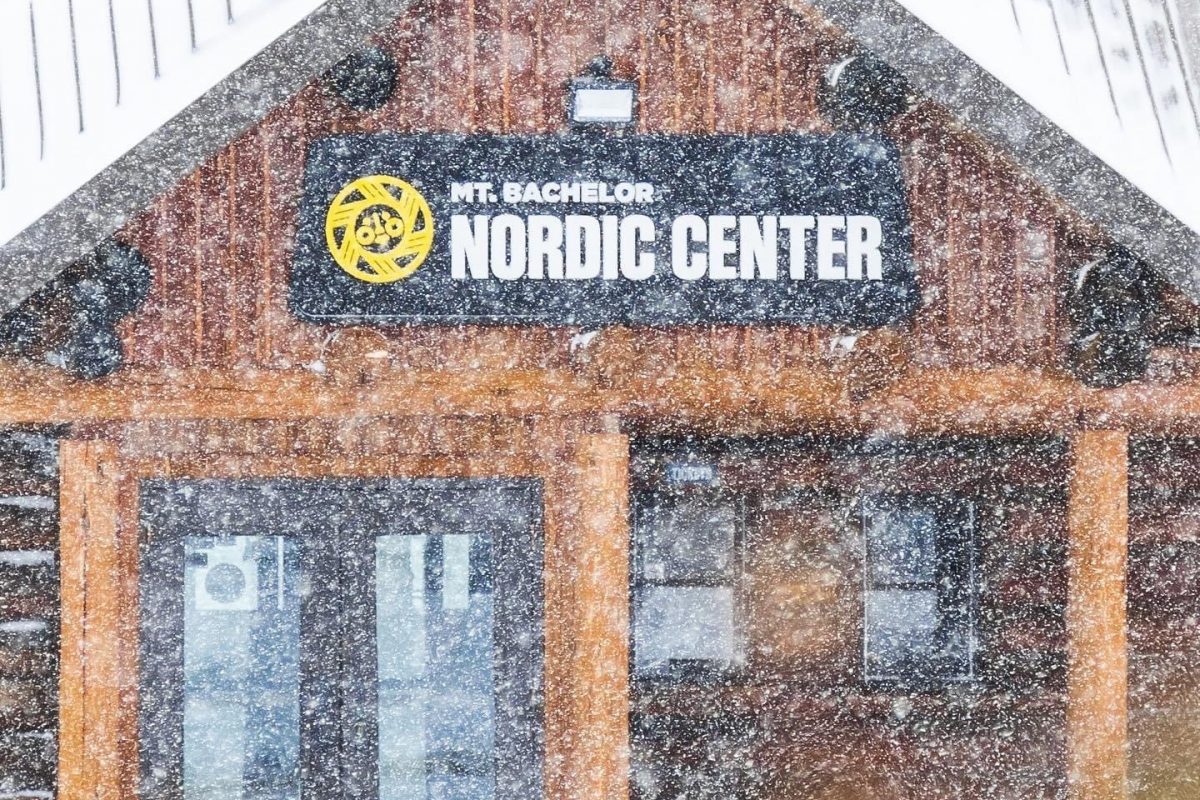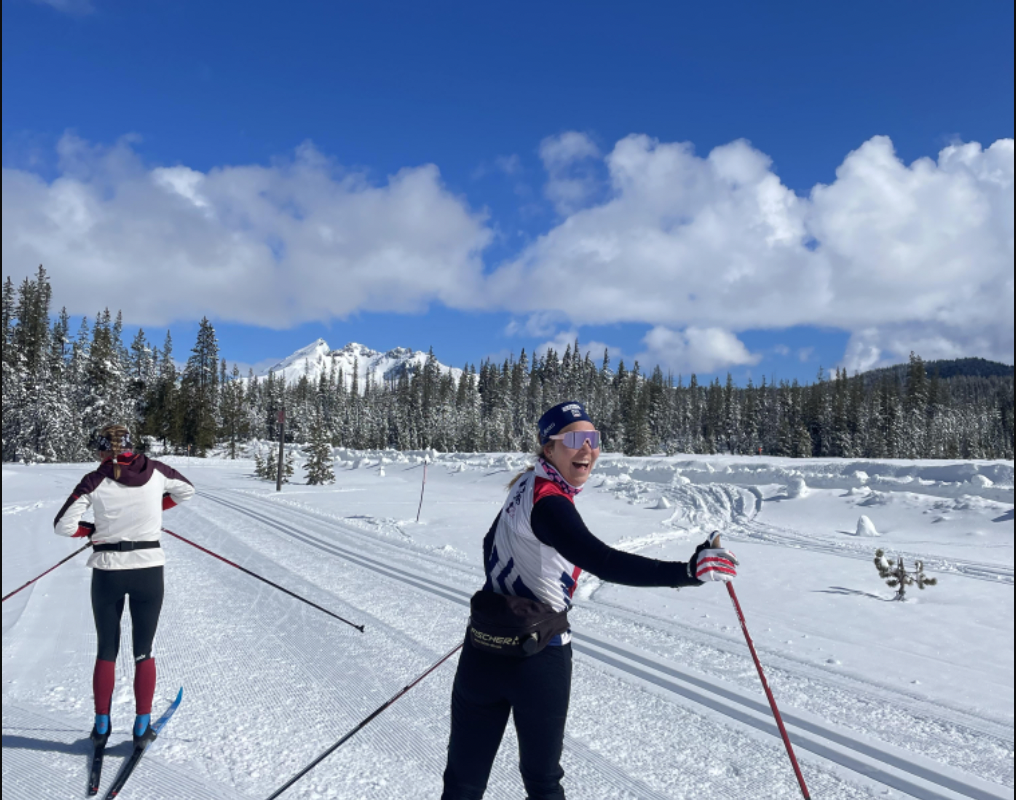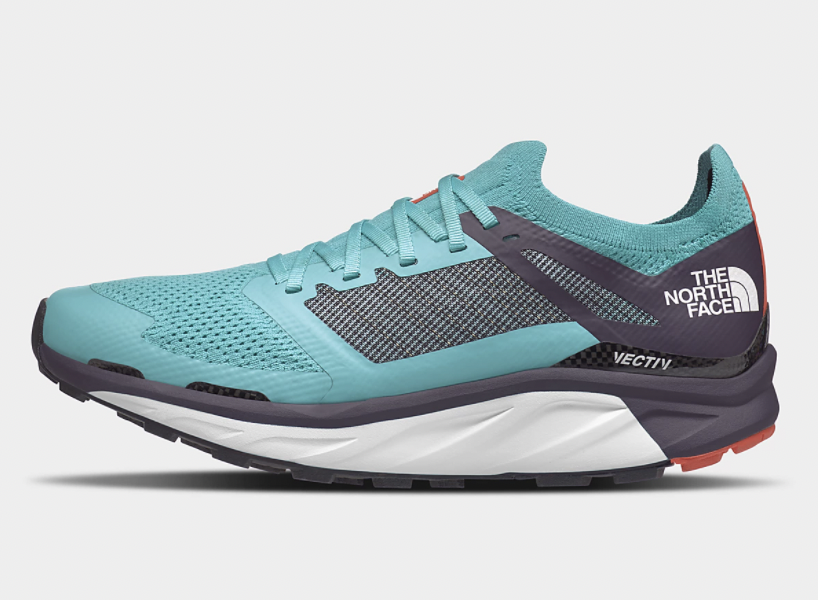One Way, best known for ski poles, offers a full line of skate and classic roller skis that are now available in the US.
One Way roller skis come in eight different models:
Skate Skis:
Skate 11 Titanium
Skate 9
Skate 7
Skate 5
Classic Skis:
Classic 11 Titanium
Classic 9
Classic 7
Classic 5
With the exception of the Skate 11 and Classic 11 Titanium race models, all One Way skis feature similar components and construction. The shafts are made from lightweight aluminum. Classic shafts are 700mm in length and skate shafts are 530mm. Classic wheels are 75mm in diameter, while the Skate 5 features an 84mm wheel compared to 100mm for the 7 and 9.
The high-end race models have a lighter shaft that made from titanium. The Classic 11 wheels are slightly larger at 80mm. The Skate 11 features 100mm wheels.
We tested three of the One Way models, the Skate 5, the Classic 5 and the Classic 7. These are striking skis visually – each model is a different bright color – the Classic 7 is dark pink and the Skate 5 and Classic 5 are both bright electric blue. Aesthetics should not be the basis for ski choice, but it is fun to have skis that stand out visually.

After the color, the next significant feature that we experienced was the weight. These skis are light – very light. They look fast, feel fast, and the Skate 5 and Classic 7 WERE fast. This raised an interesting question regarding ratings. A ski is not inherently bad because it is very fast (or very slow). The speed just makes it appropriate for a different purpose. However, we believe that most roller skiers in North America are most interested in roller skiing as a training tool. So while the One Way Skate 5 skis would rate quite high as a racing ski, we give it a poor score because it will not make a good training ski. We have tried to elaborate on the specifics of type of use within each review.
One Way Skate 5 ($250)
![]() Summary: The Skate 5 is a light-weight, responsive ski. Very high speed, this ski is ideal for pushing the limits of high-speed technique and racing, but is not a good daily training option.
Summary: The Skate 5 is a light-weight, responsive ski. Very high speed, this ski is ideal for pushing the limits of high-speed technique and racing, but is not a good daily training option.
Pros: Light, responsive, fun.
Cons: Too fast for daily training. Not good on rough pavement.
These skis are all about one thing – speed. One Way markets the Skate 5 as a “training roller ski.” If this is a training ski, I can’t imagine what the racing skis are like. I have never been on roller skis this fast.

The wheels are a firm polyurethane, measure 84mm in diameter and are the common narrow width found on many skate skis. Most large diameter skate wheels are 100mm. The smaller 84mm wheels are a nice change, keeping the skier closer to the ground. There is some trade-off on poor pavement performance, as the smaller wheels are less capable handling cracks and holes. But 84mm is fine for most conditions.
The hard wheel is partially responsible for the speed – the other culprit being the bearings, which One Way dubs the “One Way Speed Bearing.” These wheels spin.
The skis feel great when clicked on. They are exceptionally light, making the swing weight much more ski-like than many other skate options.
Everything about this ski screams speed – from the color to the wheels. Trying them for the first time, I felt like I was on ice skates. What does this mean in terms of performance? The short shaft, the wheels and the weight make for an extremely responsive ski, but it is hard to recommend these skis for anything other then racing. At training speeds the prominent technique is V2 alternate. It is easy to V2 all but the steepest hills. Raising your heart rate to the level 4 range is nearly impossible, and level 3 intervals require a steep and constant grade. On easy terrain, anything but level 1 requires constant pushing of the pace.

So overall this is not a good ski for daily training, though there are some advantages. The skis will push your ability to maintain efficient high-speed techniques. If you have trouble balancing and generating power at high speed, these skis will provide an excellent challenge. Additionally, the focus and constant awareness needed to raise your heart rate into the level 1/level 2 range forces attention on technique and the effort of every stride.
The combination of the hard wheels and the relatively stiff shaft mean this ski is not good on rough pavement. The shaft features a single piece of aluminum with the fork formed by a cutout at the front or back. This construction is identical to many of the other skate skis we tested, including the previously reviewed Pro-Ski S5e. It is simple to remove wheels, making it easy to rotate front and back, and flip wheels to even wear. A simple nut and bolt secure each wheel.
The Skate 5 comes with mud guards on all wheels. It is worth noting that of all the large diameter skate roller skis we tested, only the One Way Skate 5 and the Marwes come with mud guards. The small diameter Pro-Ski S2 also comes equipped with mud guards.
FasterSkier’s Buying Advice: If you are looking to challenge Kris Freeman in next fall’s “Climb to the Castle” roller ski race, this is the ski for you. The One Way Skate 5 is fast and makes a great race ski, but does not offer enough resistance for daily training.
One Way Classic 7 ($315)
![]() Summary: The Classic 7 is a light-weight classic roller ski. Relatively fast, it is good for racing and training at higher speeds.
Summary: The Classic 7 is a light-weight classic roller ski. Relatively fast, it is good for racing and training at higher speeds.
Pros: Light, responsive, good ski-like feel, wide shaft. Good for double poling in hilly terrain. Looks sweet.
Cons: On the fast side for daily training. Rear ratchet.

Like the Skate 5, the Classic 7 is a fast ski, though not as strikingly so. A rear-ratcheted classic ski, it provides a good ski-like feel. The aluminum shaft is wide – just a few millimeters more than other models, but enough that the platform feels more ski-like.
The wheels are hard rubber, and also provide a nice feel on good pavement – akin to classic skiing in hard-track conditions. But the combination of the stiff shaft and the hard wheels means that this ski is not particularly good on rougher pavement. It is not as significant as the Pro-Ski S2 skate, but because most skiers will be mainly double poling (skis don’t leave the ground), the vibrations are considerable.

The speed of these skis means that most skiers will spend a majority of their time double poling. This is not necessarily a bad thing, but if you don’t have access to hilly terrain, you will need to focus to get your heart rate up. Like the Skate 5, this can be good – you will need to pay attention to your double pole technique and have a powerful poling motion each stride.
The ratchet is on the rear wheel. In general, front ratchets are better for technique, helping to somewhat avoid the tendency to kick straight back. It is not possible to switch the front and rear wheels as the forks are different and are riveted onto the shaft.
The One Way classic skis have a relatively short shaft. This caused some issues while striding. The front wheel came off the ground on every kick, resulting in an annoying bump when it came back down. Combined with the back wheel hitting this created a double bump that significantly impacted both performance and enjoyment. Fortunately there is a way to avoid this. If you have smaller feet, you will be able to mount the bindings further back, changing the balance point and keeping the front wheel down. If you need to mount the skis for bigger skiers, the key is to back the binding up and shorten the heel plate. This means the heel of the boot will actually sit on the part of the shaft where the fork and mud guard attach. Enough of the boot still hits the heel plate, and the skis kick fine. See the bottom of this article for photos illustrating proper mounting.
As with all wide-wheel classic skis, cornering is not particularly good. This is the nature of the beast, and not specific to One Way.
FasterSkier’s Buying Advice: The Classic 7 roller skis are on the fast side, but if you mount them correctly, they offer a nice ski-like feel on good pavement. The speed makes these a good ski for double poling in hilly terrain or for skiers looking to keep up with faster training partners.
One Way Classic 5 ($250)
![]() Summary: The Classic 5 is a light-weight classic roller ski. A slow ski, it is good for training, especially strength.
Summary: The Classic 5 is a light-weight classic roller ski. A slow ski, it is good for training, especially strength.
Pros: Light, responsive, good ski-like feel, wide shaft. High resistance will make you strong!
Cons: Stiff shaft and firm wheels make for a somewhat rougher ride, rear ratchet.
The Classic 5 is nearly identical to the Classic 7 with the exception of color. The above review on the Classic 7 covers the general characteristics of the ski. The main difference is in the bearing on the rear wheel. The Classic 5 features a significantly slower bearing, making for one of the slowest skis we tested. The slow speed counters some of the issues on rough pavement – the slower you move the less pronounced vibrations will be. This makes the 5 a more versatile ski than the 7. I had no complaints on flats and downhills in regards to vibrations. The Classic 5 did not perform as well on downhills, especially when compared to a wood or composite shaft ski, but this is not a deal breaker.
The Classic 5 also seems to have a softer shaft than the Classic 7. One Way representatives did not respond to my questions, so I could not confirm this form a manufacturing standpoint, but the 5 has noticeably greater shaft deflection and certainly feels softer when skiing. The result is a better ski-like feel and improved rough pavement performance. Compared to wood and composite skis, this is still a relatively stiff ski – offering high power return when kicking.
A slow ski like the 5 has a number of good uses. The extra resistance is very good for strength training – especially if you live in a relatively flat area or are quite strong. They also are a good option for training with slower partners. I used the 5s on several occasions when easy skiing with my girlfriend. We were both able to get a good workout while skiing together.
The Classic 5 grew on me as I skied it more. I enjoyed striding on it, mainly due to the light weight and wide shaft – it felt free and easy – not particularly clunky.
Note the issues with mounting discussed above in the Classic 7 review. Mount them as far back as possible!
FasterSkier’s Buying Advice: The Classic 5 is a great option for a skier looking for a high resistance training ski and for people who regularly train with slower skiers. While the rough pavement performance is not perfect, it is passable due to the lower speeds and a softer shaft. This ski would have ranked higher, but I feel that you should not have to mount a roller ski in this manner to achieve good performance.





Topher Sabot
Topher Sabot is the editor of FasterSkier.






7 comments
genegold
June 7, 2009 at 7:04 pm
Good reviews. It would be helpful to hear from One Way’s rep to what degree wheels can be mixed and matched.
Speaking to the reviews in general, one very important consideration that would help many readers of this site is discussion of relative downhill speed. One shouldn’t assume that flatland speed translates directly to downhills speed. Many rollerskis use wheels/bearings that act as a speed governor, although where that kicks in differs by brand, ski and set up. For example, I would think that the Pro-Ski Roadline Tech (classical) with narrower front wheels would roll downhill faster than the wider-wheeled C2, other things being equal. At least that was my experience with the Marwe combis (+ classical extenders), using 33mm wheels in front and 40mm in back, vs. 40/40. How much of that difference was wheel width and how much was different rubber, I don’t know. Independent of those variables is the subjective sense of speed and stability on downhills. I’ve experienced where a classical ski that rolled slower on flats actually felt faster, or perhaps it was less sense of stability and control, on downhills than a taller, thin-wheeled skate of the same manufacturer.
FasterSkier
June 7, 2009 at 7:26 pm
While roller skis do have somewhat different speed characteristics on flats and downhills, none of the skis we tested showed markedly different performance between terrain. Skis that were fast on the flats were fast on the downhills, and vice versa. Speed relative to other skis also remained consistent. The example of expecting the Roadline Tech to roll faster than the C2 is flawed as it is ignores a number of other variables that will impact speed. Wheel diameter certainly is one such variable, but bearing and hardness of the wheel must be considered. I glide tested all skis on a downhill and skied them extensively on all terrains. The general speed terms I use in the reviews (very fast, fast, slow, etc) give an accurate representation of the performance. A detailed speed study might yield some more information, but ultimately I believe the relative speeds between skis would be the same.
It is also impossible to easily control for skiing ability in regards to speed, but again, my experience is that balance will not play a large role in ski speed.
rbladel
June 7, 2009 at 7:57 pm
I’m glad to see a new roller ski name in the market, but I’d be very leary of the Oneway skis because of the apparently riveted-on forks. V2 used to make the original model Aeros that way, and all of my teammates who had those skis experienced failures of the rivets. I replaced mine with SS machine screws and nuts, but that certainly raised the already substantial weight. The newer Aeros are all welded, and last much longer because of it.
Love the reviews. New roller skis are always a gamble. I’m curious about the new V2 SL 98s and the 9000 classics. I’d also like to see long-term follow ups on all of the skis you review.
Martin Hall
June 8, 2009 at 8:30 am
Oneway is definitely a new boy on the block, when it comes to roller skis, if they are putting the ratcheted wheel on the back of the ski. This is simply a no-no and I would assume easily, I hope, just a matter of switchhing the wheels.
All I can say, is that we just don’t need anymore fast roller skis–or should I say faster roller skis—give us a chance to go to our coffins with some skin on our elbows and knees—speed reducers or brakes, where are you???
Martin Hall
June 8, 2009 at 8:33 am
Hey Topher—how about some comments about Alpina’s roller ski boots—they look cool!!!
doughboy
October 20, 2010 at 2:27 pm
I have some classic-5s. While it is true, as noted in the review, that the front and rear forks differ, it is a snap to move the classic-5’s ratchet to the front rear, but you must do this BEFORE mounting your bindings. Just unbolt the rear wheel, rotate it’s axle 180 degrees, and re-mount the wheel*. Then mount your bindings as shown in the review with the ratcheted wheel in front.
*when you re-mount the wheel, make sure you use NEW nylock nuts. These are not designed to be reused in any application. I found some at a local hardware.
OEB2ODB
January 16, 2011 at 7:30 pm
Jan 2011: Found a great deal on classic 5’s at ORS in VT. Followed doughboy’s advice and switched the ratchet wheel around to the front – works great. A great idea, many thanks.
Notes: 1) had to drill with 3/16th bit for pilot holes. seemed bigger than normal, but chalked up to aluminum rather than wood.
2) removed rear mudflap, and then slightly notched binding to slide in to the space. Size 49 boot – thanks for the tip Fasterskier!
3) took M8x1.25 locking nuts to reattach front wheel.
not rocket science to attach a salomon binding, but I may leave this to the experts for a pair of race skis.
keep sliding,
OEB